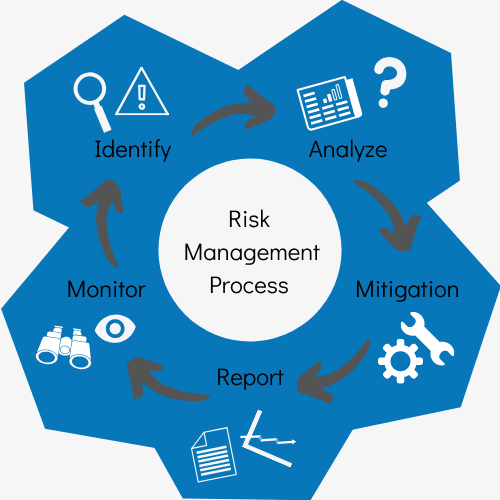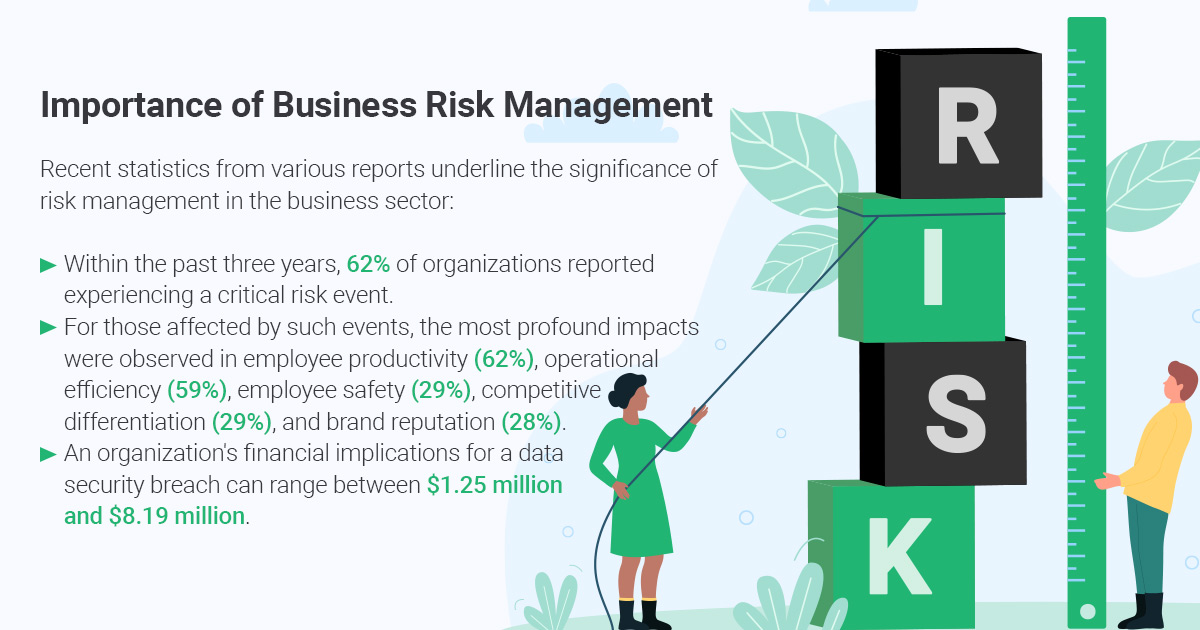The Growing Importance of Risk Management in Healthcare and Safety
The Growing Importance of Risk Management in Healthcare and Safety
Blog Article
Checking out the Significance of Risk Management for Effective Decision-Making Approaches
In the complex world of organization, Risk Management becomes a vital element in the decision-making procedure. The capacity to determine prospective hazards and opportunities, and plan appropriately, can spell the distinction between success and failing. With tools such as SWOT and PESTEL, companies are geared up to make educated choices, promoting strength and adaptability in an ever-changing atmosphere. Wondering just how this works? Let's unbox the characteristics even more.
Comprehending the Idea of Risk Management
Risk Management, a critical component in decision-making, is usually misunderstood or oversimplified. Typically, it describes the recognition, analysis, and prioritization of risks to minimize, keep track of, and manage the chance or influence of unfortunate events. It's not just concerning protecting against adverse end results, yet additionally about recognizing possible possibilities. Risk Management includes structured and disciplined techniques, using information and insightful assessments. It calls for a thorough understanding of the company's context, goals, and the prospective risks that can obstruct them. From economic uncertainties, legal liabilities, strategic Management errors, to accidents and natural disasters, it addresses numerous dangers. Importantly, efficient Risk Management is not stagnant; it's a continuous, progressive process that evolves with transforming conditions.
The Function of Risk Management in Decision-Making Processes
In the realm of critical planning and organization operations, Risk Management plays an indispensable role in decision-making procedures. It aids in recognizing potential threats and unpredictabilities that could influence the success of organization goals. By mapping these risks, business can formulate approaches to reduce their impact, guaranteeing organization continuity and security. Risk Management hence comes to be a crucial tool in decision-making, assisting leaders to make educated choices based on a detailed understanding of the risks included. It urges a proactive method, allowing organizations to expect and prepare for possible future situations. This substantially minimizes the chance of adverse consequences, promoting more effective and efficient decision-making methods. Risk Management serves as a vital component in the decision-making processes of any kind of company.

How Risk Management Improves Strategic Planning
In the context of tactical preparation, Risk Management plays a pivotal duty. Launching with the identification of potential threats, it better reaches the application of Risk reduction procedures. The function of Risk Management is dynamic but not fixed, as it demands constant surveillance and adjusting of approaches.
Determining Potential Threats

Executing Risk Mitigation
Risk reduction strategies can vary from Risk avoidance, Risk transfer, to risk decrease. Each strategy needs to be customized to the particular Risk, considering its prospective influence and the organization's Risk resistance. Effective Risk mitigation requires a deep understanding of the Risk landscape and the possible influence of each Risk.
Monitoring and Readjusting Strategies
Though Risk reduction is an essential learn the facts here now action in calculated preparation, continuous monitoring official statement and adjustment of these strategies is equally important. This recurring procedure allows companies to identify brand-new threats and reassess existing ones, making sure the carried out approaches stay reliable in the ever-changing company setting. It likewise gives an opportunity to examine the success of the Risk Management steps, permitting modifications to be made where essential, additional boosting tactical preparation. Reliable monitoring and modification call for using analytics and key efficiency indicators (KPIs) to measure efficiency. These devices give important data-driven insights that can educate tactical decision-making. Monitoring and readjusting Risk Management methods is a crucial element for boosting an organization's durability and calculated preparation.
Case Studies: Successful Risk Management and Decision-Making
In the globe of organization and money, effective Risk Management and decision-making commonly offer as the pillars of thriving business. One such entity is a multinational oil company that mitigated financial loss by hedging versus rising and fall oil prices. In an additional circumstances, a technology start-up grew by recognizing and approving risky, high-reward methods in an unstable market. A global bank, encountered with regulative uncertainties, successfully navigated the situation through aggressive Risk evaluation and dynamic decision-making. These instances highlight the worth of astute Risk Management in decision-making processes. It is not the absence of Risk, but the Management of it, that typically separates successful firms from unsuccessful ones. These cases emphasize the vital role of Risk Management in critical decision-making. importance of risk management.
Devices and Techniques for Reliable Risk Management
Navigating the intricate labyrinth of Risk Management requires the right set of strategies and tools. These tools, such as Risk signs up and warm maps, help in identifying and examining potential dangers. Strategies include both quantitative approaches, like sensitivity analysis, and qualitative approaches, such as SWOT evaluation. These help in prioritizing threats based on their potential effect and probability. Risk action approaches, a key element of Risk Management, entail accepting, avoiding, transferring, or mitigating threats. Monitoring and managing threats, via regular audits and reviews, make sure that the techniques stay reliable. With these tools and strategies, decision-makers can browse the facility landscape of Risk Management, consequently assisting in educated and reliable decision-making.
Future Trends in Risk Management and Decision-Making Techniques
As we Homepage check out the large landscape of Risk Management, it ends up being obvious that the tools and methods utilized today will remain to advance. Future fads point in the direction of an enhanced dependence on modern technology, with synthetic intelligence and artificial intelligence playing significant duties. These technologies will certainly allow organizations to predict possible threats with higher accuracy and make even more educated decisions. In addition, there will certainly be an expanding emphasis on strength, not simply in managing threats however also in recovering from negative circumstances. Lastly, the principle of Risk culture, where every participant of an organization understands and associated with Risk Management, will obtain a lot more prominence. These patterns herald a more inclusive and positive approach towards Risk Management and decision-making.
Conclusion

Risk Management thus becomes an essential device in decision-making, assisting leaders to make educated choices based on a comprehensive understanding of the risks entailed. Risk mitigation strategies can range from Risk evasion, Risk transfer, to risk decrease (importance of risk management). Efficient Risk mitigation calls for a deep understanding of the Risk landscape and the prospective impact of each Risk. Risk reaction techniques, an essential component of Risk Management, include accepting, avoiding, transferring, or mitigating threats. The principle of Risk culture, where every member of an organization is mindful and involved in Risk Management, will certainly gain extra importance
Report this page